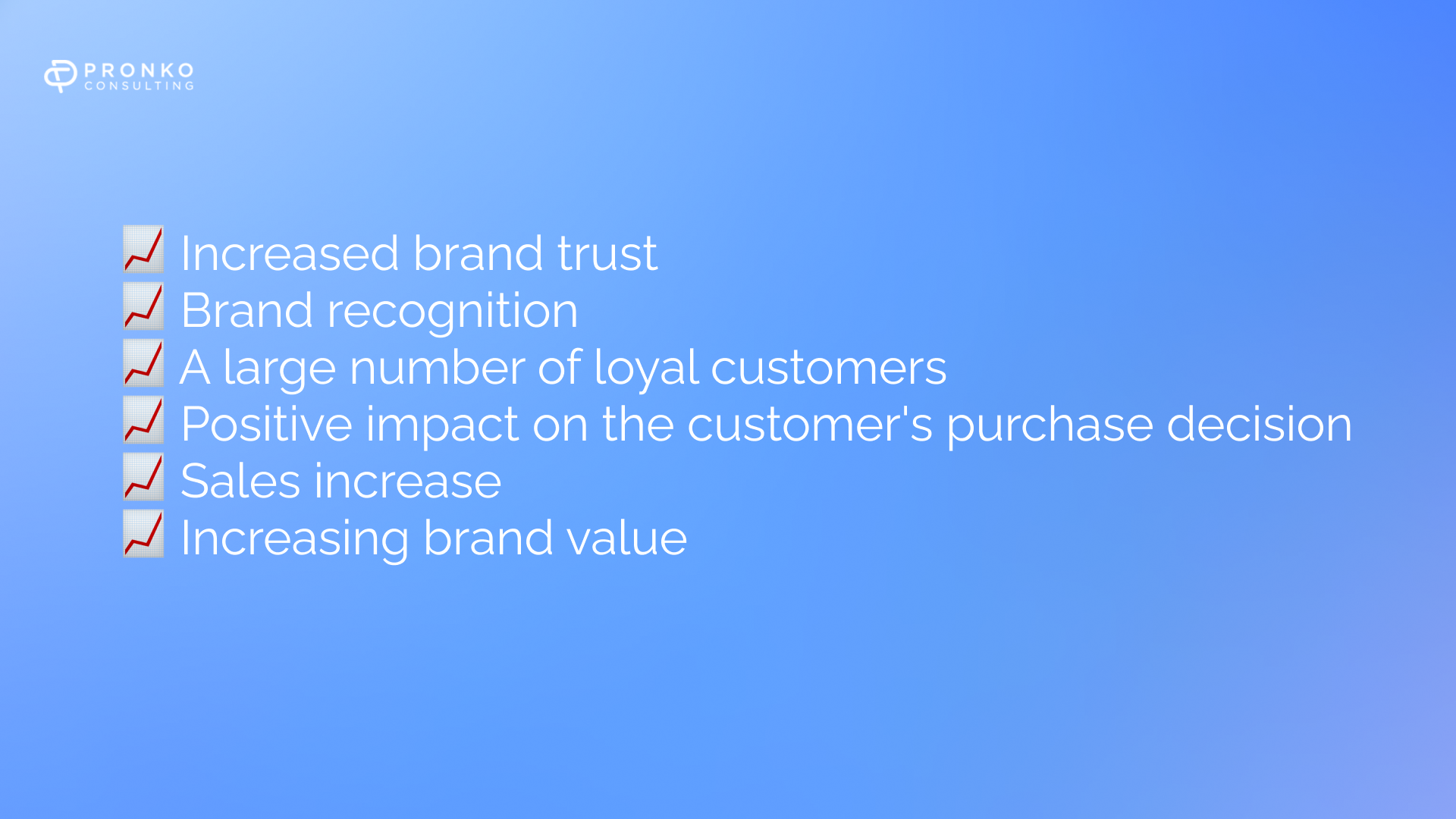What is brand management, and why is it needed?

Iconic designer Walter Landor once said, "Products are in factories; brands are in the minds." While products win visitors over with their appearance and quality, brand management strengthens their emotional connection with the company, fills them with a positive experience, and makes them return for purchases. This concept includes creating a website, increasing brand confidence, developing a brand culture, and more.
In this article, you will see that the key to successful brand management is to develop a clear strategy that will help distinguish a company from the rest and encourage customers to choose it again and again consciously.
What is brand management?
Brand management is the company's relationship with the target audience and a set of measures that the company takes to maintain and improve these relationships.
Brand management is to positively influence the brand's perception and increase its value in the eyes of the consumer. It leads to trust, several loyal visitors, and increased brand awareness.
A good brand manager does not influence the audience's reaction - he learns from it to improve the product and brand reputation.
Learn more: 15 tips for improvement of website usability
Why brand management is important
Think of a brand as a garden. You dig up the ground, plant seeds, and wait for sprouts to grow something. However, for plants to grow healthy and robust, they need to be provided with the proper watering and sun, fertilized, and protected against pests.
A brand does not acquire fame and a massive audience on its own, and it needs constant help directing the visual image and communication of the company in the right direction. With enough effort, the business will "bloom," bringing the following benefits:

Take, for example, the Coca-Cola brand. To what extent does it owe fame to drink itself, and how much to its identity: the recognizable red color and font, cult advertisements, cheerful copyrights, and brand ambassadors? Why, even memories from the nineties, when children were looking for prizes under covers during large-scale competitions? It is where the power of brand management lies - with effort, you can increase brand awareness and make it a symbol of the entire industry.
Fundamentals of brand management
When talking about brand management, learning a few key concepts is essential. By bringing them together, you will form a deeper understanding of branding.
Brand value
Brand value is how expensive and high-quality your product is perceived by customers.
Imagine that two companies sell granola with the same composition. However, one company charges 20% more and successfully sells the product. It means that the company has a high brand value, and customers buy its products because they believe the product and brand are of high quality and the price is fair. An increase in brand value leads to you earning more than competitors, even with the same product characteristics.
How to improve: listen to user feedback and improve the product positioning strategy to increase its value in customers' eyes.
Learn more: Professional burnout of an entrepreneur: what to do?
Brand recognition
Sometimes, one glance at a logo is enough to recognize the brand it belongs to instantly. Even without the inscription and other brand attributes, you will recognize the golden arches of McDonald's or the yellow oval of IKEA. This phenomenon is called brand awareness and is highly valued in brand management.
Brand awareness encourages the user to choose a particular product, regardless of its price or availability. For example, due to the high awareness of the Apple brand, many are ready to wait for a new smartphone model.
How to improve: Develop strong visual and non-visual guidelines that ensure a consistent and consistent brand experience across all platforms and channels.
Brand loyalty
Customers who trust a brand develop a closer emotional connection with it over time and choose it even when there are worthy alternatives. Remember how sad it is when the same perfume disappears from the shelves or your favorite bar suddenly closes? People become attached to brands in much the same way they are attached to living beings, which becomes a decisive advantage for the business.
High brand loyalty leads to increased social media exposure, positive reviews, and word-of-mouth recommendations—without any financial investment. In addition, a friendly client community is forming around the company, which you can encourage and develop to maintain long-term relationships.
How to improve: create helpful content, launch incentive promotions, and keep the service and support work at a high level.
Make the payment easier: set up LiqPay on your website.
Brand reputation
Unlike the previous points, brand reputation is built regardless of whether you put in the effort or not. However, it depends to some extent on whether this reputation will be good or scare away the client even before the first contact.
Reputation comprises every branding detail - from packaging and product features to the tone of communication and support service. It is especially true in the Internet age when a single post from a company or a review from a client can go viral, ruining a brand's reputation or taking it to the next level.
How to improve: first of all, monitor the quality of goods and services, and in case of errors, quickly recognize and correct them.
In addition, keep an eye on how other participants in the process represent your brand: brand managers, designers, sellers, and so on. Remember, being rude to you by a cashier at a supermarket is usually enough to form an opinion about the entire company. You might not be interested that the CEO calls quality service one of the company's central values, and marketers have written 50 pages of scripts to resolve conflicts with visitors politely.
Brand management strategies
Manage brand assets
Examples of brand assets:
- Website
- Brand name
- Logo
- Brand colors
- Typography
- Tagline
- Business cards
- Package
In successful brand management, all assets are connected and convey the same message and values. Let's go back to Apple's example, where every support demonstrates simplicity and innovation, from the clean logo to the minimalist packaging.
Build a strong brand strategy
A good strategy not only defines the brand's goals but also helps to achieve them. Be sure to include critical values, philosophy, and mission. The system gives the brand meaning and allows for the more efficient and conscious use of its assets.
Maintain Brand Consistency
The brand should appear on every site and channel - in a physical store, website, or Twitter account. For example, if part of the brand identity is informal communication, this is how salespeople, support, SMM managers, and even company leaders should communicate. The consistency of the brand allows you to quickly imbue its ideas and recognize them at a glance on any platform.
Create an honest and open brand culture
Culture is a set of unspoken laws and values on which a brand is built. Unlike the previous points aimed at the consumer, brand culture is for employees. Create an environment that will motivate employees and fill them with pride in the product - then, they will be happy to broadcast the brand culture to buyers and suppliers.
Manage brand perception
It is essential to build a strong brand and make sure that people perceive it exactly as you intended. Analyze brand perceptions every 6-12 months with customer surveys and employee interviews. This way, you can be sure that the brand remains true to itself and does not change under the influence of fleeting trends.
